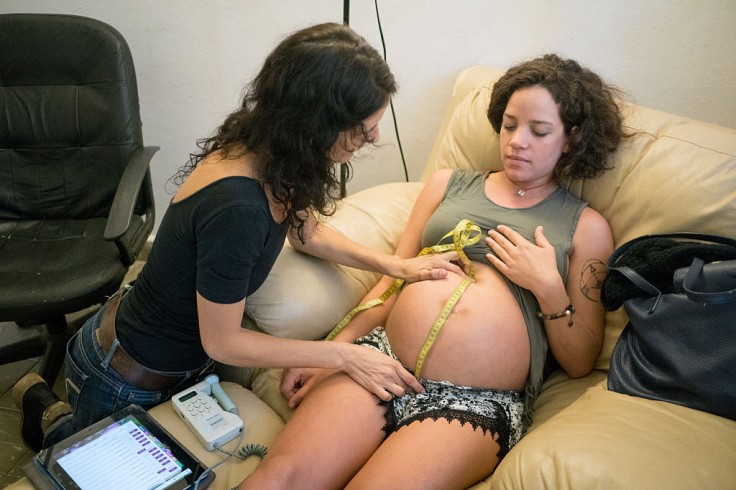
Becoming pregnant immediately after menstruation is unlikely but not impossible. The probability of pregnancy is generally lower right after the menstrual period compared to the days or the week following it.
While there isn't a completely "safe" time during the menstrual cycle for unprotected sex, there are periods when fertility is higher.
When Is a Woman Fertile
Fertile days typically extend 3-5 days after the period ends, influenced by the length of the menstrual cycle.
Short cycles, like 22 days, may lead to ovulation shortly after menstruation, and since sperm can survive for 5-7 days, conception is feasible if ovulation occurs a bit earlier than usual.
Irregular menstrual cycles can also give the likelihood of pregnancy just after a period.
Enticing in unprotected sex during menstruation is not advisable due to the higher risk of infection. Using contraception, such as condoms, reduces both infection risks and the chances of pregnancy. Protected sex during menstruation offers satisfaction like relief from period cramps and improved lubrication.
Acknowledging early signs of pregnancy, such as spotting, fatigue, increased urination, vulva changes, breast and nipple changes, and food cravings, can be essential.
To confirm a possible pregnancy, taking a pregnancy test after a missed period or late period is a must.
Regular periods allow for a clear understanding of the timing, while those with irregular cycles should wait at least three weeks after intercourse.
Home pregnancy tests are generally reliable but may be less accurate in the early stages. Performing the test in the morning with concentrated urine is recommended.
The correctness of home pregnancy tests is claimed to be 97% to 99%, comparable to tests in a medical setting. However, if the outcome is negative but pregnancy is still suspected, repeating the test a week later or consulting a healthcare provider is advisable.
Blood tests by a gynecologist offer higher accuracy than home pregnancy tests. However, specific phases of your menstrual cycle present higher fertility, especially during ovulation when an egg is free, typically 12 to 14 days before the onset of your next period. This is the most fertile period in your cycle and the time when conceiving is most likely.
Woman's Menstrual Cycle and Pregancy
Understanding your menstrual cycle is essential. It starts on the first day of your period and extends until the first day of your subsequent period.
Ovulation, the prime fertility period, significantly increases the chances of getting pregnant. It's important to note that sperm can survive in the body for up to 7 days after intercourse.
If ovulation occurs within this timeframe, pregnancy becomes a possibility. Thus, conception soon after the conclusion of your period is feasible, especially with an early ovulation and a naturally short menstrual cycle.
Conceiving depends on perfect timing to secure optimal conditions for the meeting of the egg and sperm.
Understanding your menstrual cycle provides important insights into when your body is primed for this process. The initial step involves identifying your most fertile days.
Usually, women have a 28-day menstrual cycle, offering approximately 6 fertile days each month. This period surrounds the day of ovulation when one of your ovaries releases an egg, as well as the preceding 5 days.
Key to developing the likelihood of pregnancy is enticing in sexual activity within this window. Ovulation is crucial for conception, and monitoring monthly periods aids in becoming familiar with your body's fertility.
Charting your menstrual cycle and recording its duration is a must, given that cycle extent may vary slightly each month. Once you start at an average cycle length, deduct 18 days from your shortest cycle to determine the initial fertile day and deduct 11 days from your longest cycle to recognize the last fertile day.
Having intercourse between these two dates maximizes the chances of getting pregnant.
Methods to Identify Ovulation
Observing your Basal Body Temperature (BBT) is another essential method.
The BBT, measured first thing in the morning, slightly rises after ovulation and stays raised until your period commences. By recording daily temperatures, you can identify subtle changes indicating ovulation. Utilizing a basal body thermometer, which is more delicate than a standard thermometer, is recommended for this purpose.
Inspecting cervical mucus is also essential, as the same hormones regulating the menstrual cycle influence its quantity and texture during ovulation. Leading up to ovulation, the mucus becomes stickier and cloudier, eventually transforming into a slippery, egg-white consistency just before ovulation. This fertile mucus phase typically lasts 3-4 days, performing the optimal time for conception.
To check cervical mucus, use clean fingers or a tissue to inspect the vaginal opening multiple times daily, observing its characteristics.
Combining observations of cervical mucus changes with BBT measurements provides a complete view of your menstrual cycle. It's essential to note that factors like breastfeeding or the use of certain hygiene products may impact cervical mucus. Gynecologists generally oppose the use of such products.
Related Article : How to Get Pregnant Quickly: Expert Advice To Fast-Track Fertility